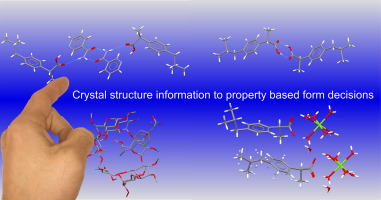Advanced Drug Delivery Reviews ( IF 16.1 ) Pub Date : 2017-03-23 , DOI: 10.1016/j.addr.2017.03.003 David J. Berry , Jonathan W. Steed

|
As small molecule drugs become harder to develop and less cost effective for patient use, efficient strategies for their property improvement become increasingly important to global health initiatives. Improvements in the physical properties of Active Pharmaceutical Ingredients (APIs), without changes in the covalent chemistry, have long been possible through the application of binary component solids. This was first achieved through the use of pharmaceutical salts, within the last 10–15 years with cocrystals and more recently coamorphous systems have also been consciously applied to this problem. In order to rationally discover the best multicomponent phase for drug development, intermolecular interactions need to be considered at all stages of the process. This review highlights the current thinking in this area and the state of the art in: pharmaceutical multicomponent phase design, the intermolecular interactions in these phases, the implications of these interactions on the material properties and the pharmacokinetics in a patient.
中文翻译:

药用共晶体,盐和多组分系统;分子间相互作用和基于性质的设计
随着小分子药物的开发变得越来越困难,患者使用的成本效益也越来越低,用于改善其性能的有效策略对全球卫生计划变得越来越重要。长期以来,通过使用二元组分固体,可以在不改变共价化学的情况下改善活性药物成分(API)的物理性能。这是通过在过去的10-15年中与共晶一起使用药用盐来实现的,最近,共非晶体系也被有意识地应用于此问题。为了合理地发现药物开发的最佳多组分相,在过程的所有阶段都需要考虑分子间的相互作用。这篇评论重点介绍了该领域的最新思想以及以下方面的最新技术:



























 京公网安备 11010802027423号
京公网安备 11010802027423号